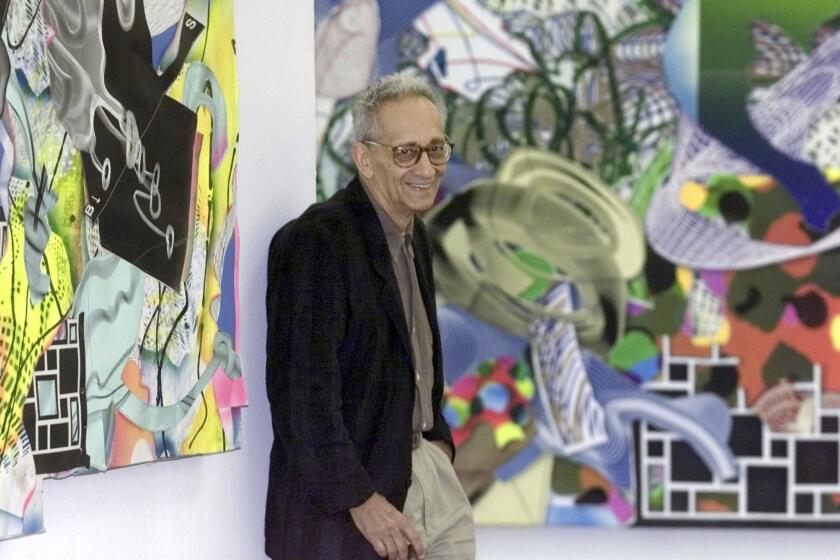David A. Wallace, 87; Planner Focused on Urban Renewal
David A. Wallace, an influential urban planner who spent decades reviving downtowns and waterfronts, most notably Baltimore’s Inner Harbor, was found dead along with his wife Monday in their Philadelphia home.
Police, who found the bodies after a hospice worker called them, said the couple committed suicide.
David Wallace was 87 and had prostate cancer, police said. His wife, Joan, was 83 and terminally ill with heart disease.
Wallace’s former partner, landscape designer William Roberts, said the master planner had become depressed in recent years with his wife’s illness and had decided not to seek aggressive treatment for his cancer.
“He had told me privately, many, many years ago, that he would probably do this, rather than be in great pain or hardship in his closing years,” Roberts said. “This was their choice.”
Wallace retired in 1991 but continued working as a consultant until about three weeks ago.
“David Wallace was a giant in his field,” said Gary Hack, dean of the University of Pennsylvania School of Design where Wallace taught planning and urban design for 17 years. “The work he did on the Inner Harbor in Baltimore was a model of how cities should revitalize their waterfronts.”
In 1963, Wallace and three partners -- Ian McHarg, Roberts and Thomas Todd -- created the conceptual plan for three decades of rebuilding Baltimore’s grubby waterfront.
For 25 years, their firm filled out that initial vision, designing promenades, piers and bridges and setting guidelines for private development. Today the project is considered one of the great U.S. urban renewal successes.
Earlier, beginning in 1957, Wallace handled planning for Baltimore’s 22-acre Charles Center to renovate the city’s central business district.
“The Baltimore experience was the major one of my professional life,” he wrote in “Urban Planning My Way,” published last spring.
Wallace’s work in Baltimore won his firm a job in New York in 1965 writing a master plan for a redevelopment of Lower Manhattan to complement the then-ongoing construction of the World Trade Center.
The plan’s central ideas included creating a new residential community at the tip of Manhattan, easier public access to the waterfront and the depression of the area’s elevated expressways. Many of those design elements were incorporated into Battery Park City.
Wallace earned the American Planning Assn.’s distinguished leadership award last year in honor of his planning, teaching and writing.
But not all of his projects were as successful as those in Baltimore.
In 1970, Wallace and his firm were hired to develop a plan for downtown Los Angeles. Along with mixed residential and office developments, he insisted the key to urban redevelopment meant cutting vehicular traffic in favor of people movers connected to a high-speed rapid transit line along the Wilshire corridor.
The people movers were never built (federal funds for the project were diverted to Miami), and the Red Line subway along Wilshire was long delayed and markedly shortened.
Wallace continued to espouse his vision of modern urban planning in Los Angeles as well as in more concentrated East Coast cities when he spoke at the dedication of the 44-story Century City Plaza Towers in 1975.
“Developments like Century City are desperately needed and all too few,” he said. “Century City will be a living, breathing, successful specimen of that rare form of development -- a new town in town.”
Born in Chicago and raised in Philadelphia, Wallace earned a master’s in architecture at Penn and was drafted into the U.S. Army Corps of Engineers during World War II.
After registering as an architect in California in 1947, he worked in Los Angeles for prominent architect Paul Williams on slum problems. Because of that experience, coupled with what he had learned from his social worker mother about problems of race and poverty, he wrote, “I became preoccupied by the issues of race and city planning.”
He earned a doctorate at Harvard’s Graduate School of Design and redirected his career into urban planning.
Information on survivors was not immediately available.
More to Read
The biggest entertainment stories
Get our big stories about Hollywood, film, television, music, arts, culture and more right in your inbox as soon as they publish.
You may occasionally receive promotional content from the Los Angeles Times.






